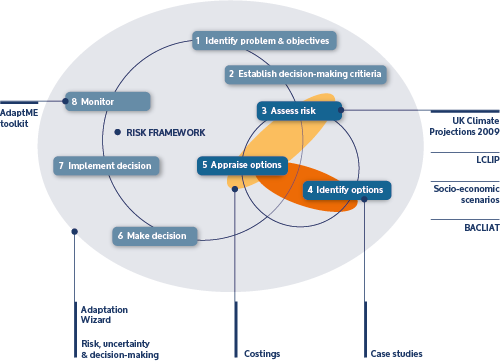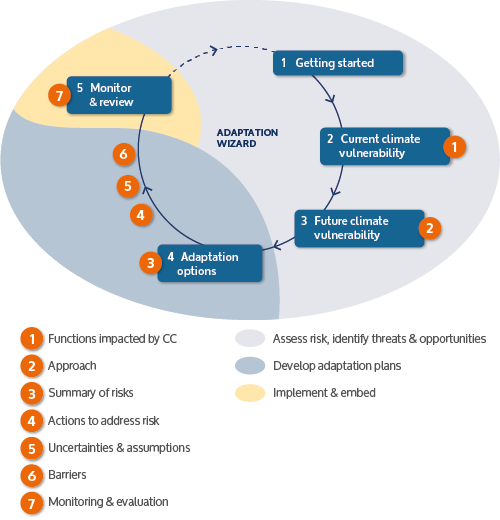The Climate Change Act 2008 gives government the authority to ask certain organisations to produce reports on:
- the current and future likely impacts of climate change on their organisation
- their proposals for adapting to climate change
This applies to organisations that are responsible for essential services and infrastructure, such as energy or transport companies. It is known as the Adaptation Reporting Power or ARP. Background information, guidance and details of the first round of the ARP are available from GOV.UK.
Risk-based approach
At UKCIP we advocate a risk-based approach to managing climate change adaptation through the Adaptation Wizard. Using the Wizard as a map of tools and resources will help you through the ARP process. See the Tools portfolio page for a larger version of the diagram.

Outline of the Reporting Power process
As an adaptation assessment, the ARP is a cyclical, iterative process to allow adaptation to be embedded into an organisation’s core planning activities. These stages are:
Stage 1: Assessing risks, identifying threats and opportunities;
Stage 2: Developing adaptation plans;
Stage 3: Implementing the adaptation plan, embedding adaptation into existing structures and monitoring the effects.
The stages can be mapped onto the Wizard :

Included in this diagram are the elements that need to be addressed in pulling together your report. These elements are described in Box 2 of the reporting powers statutory guidance (pdf, 310 KB) and have been labelled on our diagram as orange circles.
Our table identifies where the UKCIP tools can be used at the stages of the reporting process defined in Box 2 of the guidance.

